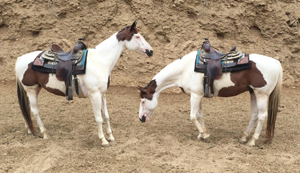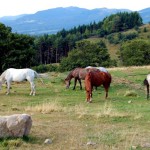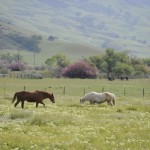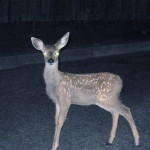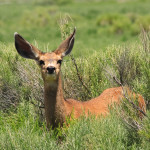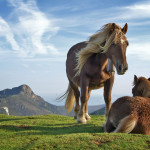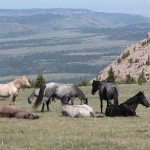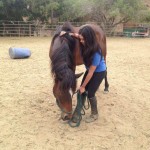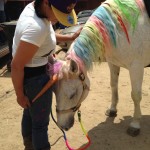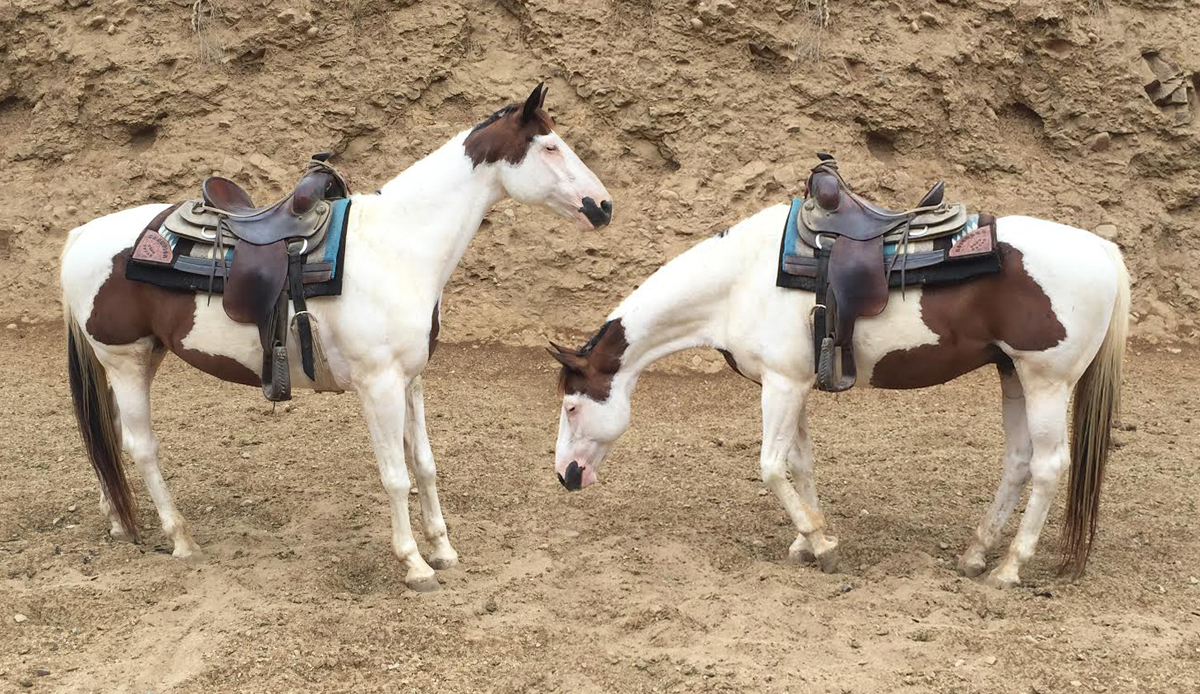
Horses are prey animals, so they live by the Prey Animal Code of Conduct, of which Article III, section 7.6, subparagraph (iii) reads:
When in doubt, raise your head and snort. If still in doubt after said raising and snorting, run. If someone nearby has already done the raising and snorting, definitely run. If someone near you runs and you aren’t sure if they’ve raised or snorted, run like the dickens. If there is a possibility that someone somewhere is raising and snorting, you should probably run. And if potential raising and/or snorting may happen some time in the near future, you might want to run just in case you missed something worth raising and snorting over.
Because horses live by this code, we as people playing with them have to be careful not to be in the way of the running or we might end up bruised, broken or worse.
They key is to think of “head up” as high alert. It’s the first thing prey animals do at the slightest hint of danger, and they do this for a couple reasons:
Horses raise their heads to get their senses (sight, hearing, smell) up and alert:
- Raising their heads gets their eyes higher—the higher their eyes are, the farther they can see.
- Raising their heads also raises and widens their field of binocular vision so they can see better and with depth perception, which is not typical of how they usually see. Take a look here for some info on How Horses See.
- Raising their heads gets their ears higher—the higher their ears, the less background noise that can interfere with their hearing. Same with raising the nose vis-à-vis smells.
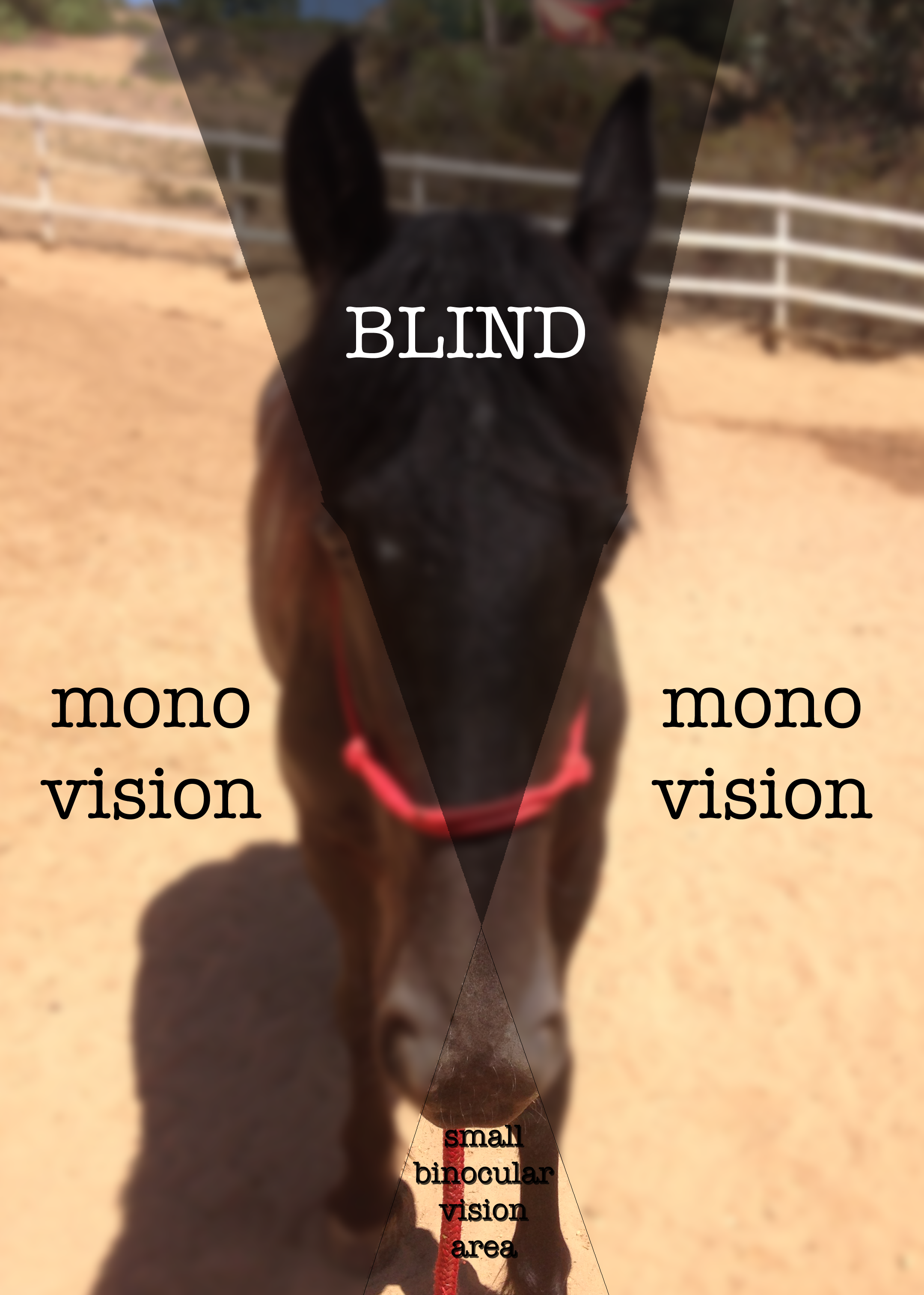
With each sensory ability at attention, a horse whose head is raised is effectively primed to bolt.
Humans working with horses typically don’t want their horses to be on high alert—the horse’s attention goes from the human (where we want it) to and external source (which we can’t control) and that’s how accidents happen. So what’s the opposite of Head Up and High Alert?
Head Down and Relaxed.
Get it? A higher head translates into a less relaxed a horse, a lower head into a more relaxed horse. And why do we want a horse who is relaxed? Relaxed horses are more willing to listen and learn because they’re not excited and/or distracted by potential (sometimes imaginary) threats. But the problem is, when you say to a horse, “Relax, buddy, put your head down,” the horse will usually respond with, “Are you crazy? That might be a horse-eating water cooler. THIS IS NOT THE TIME TO RELAX.”
So how do we get a horse to relax with his head down? Well, there are a few things that need to happen.
- First, we need a horse that’s standing still. So work on standing still.
- Then, work on getting that head down. Make sure you’re always offering your hand to smell so they can lower their head to your hand.
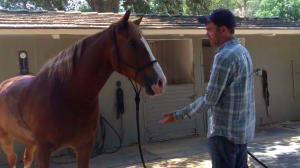 This is critical—you want to create conditions that will induce the horse to come to you. If you put your hand in his face, he doesn’t need to approach you to make contact and/or smell you, which means he doesn’t need to have his own courage or autonomy accomplish what you’re asking.
This is critical—you want to create conditions that will induce the horse to come to you. If you put your hand in his face, he doesn’t need to approach you to make contact and/or smell you, which means he doesn’t need to have his own courage or autonomy accomplish what you’re asking. - Next, lower your hand and allow the horse to follow your hand down. Be sure to incorporate the Rule of Three here: (i) lower your hand asking for him to follow; (ii) if he doesn’t start lowering his head, put a little pressure on his face by pulling down on the lead rope, releasing immediately when he starts moving his head down; and (iii) if he doesn’t start lowering his head with a little pressure, use more pressure with maybe a little bounce to it, again releasing the moment he starts moving his head down.
- As with any exercise, be sure that to praise the horse for every successful movement (even tiny ones) by releasing the pressure being applied and maybe giving them a pat on the neck with a, “Good job, bud” (or something like that). Remember: If you get him to lower his head an inch today, that’s a success. An inch a week is a success. Just working on it is a success. These things (like all things worth doing) take a lot of time, so allow it to take as long as it needs and, whatever you do, don’t force it. Just show him the way and let him take the crucial steps on his own. You will have a much happier horse if he’s allowed to find the right answer for himself.
- Now repeat. And repeat. And repeat some more. Do this exercise over and over—you’ll find it has a fake it till you make it effect. As a horse lowers his head he’ll automatically start to relax. Do it enough and you’ll see that by lowering his head, he starts relaxing as if on cue. Your horse will be akin to Pavlov’s dogs. You’ll find him taking a big deep breath every time you ask him to lower. You’ll go to lower his head; he’ll start turning to putty in your hands. It’ll become a great ritual. Soon he’ll just see you, put his head down and start relaxing. How cool are you. You’ll be his leader—the leader of the herd, you cool cat, you. Everyone wants to hang with a cool cat.
But…when prey animals have their head down they’re not snorting and freaking out. They’re also not looking out for danger because they feel comfortable that someone else is on guard, that they are safe enough not to have to stay vigilant against any of those horse-eating water coolers. Basically you’ve shown them you’re the leader—so now you have the responsibility to watch out for them. This is now your job. So spot danger from far away and help your herd to either handle it calmly or avoid it. Don’t wait for something to happen then freak out with a loud yell or blame the horse for spooking at something you didn’t prepare him for. Take your job seriously and approach potential dangers calmly. Be the leader your horse wants you to be.

